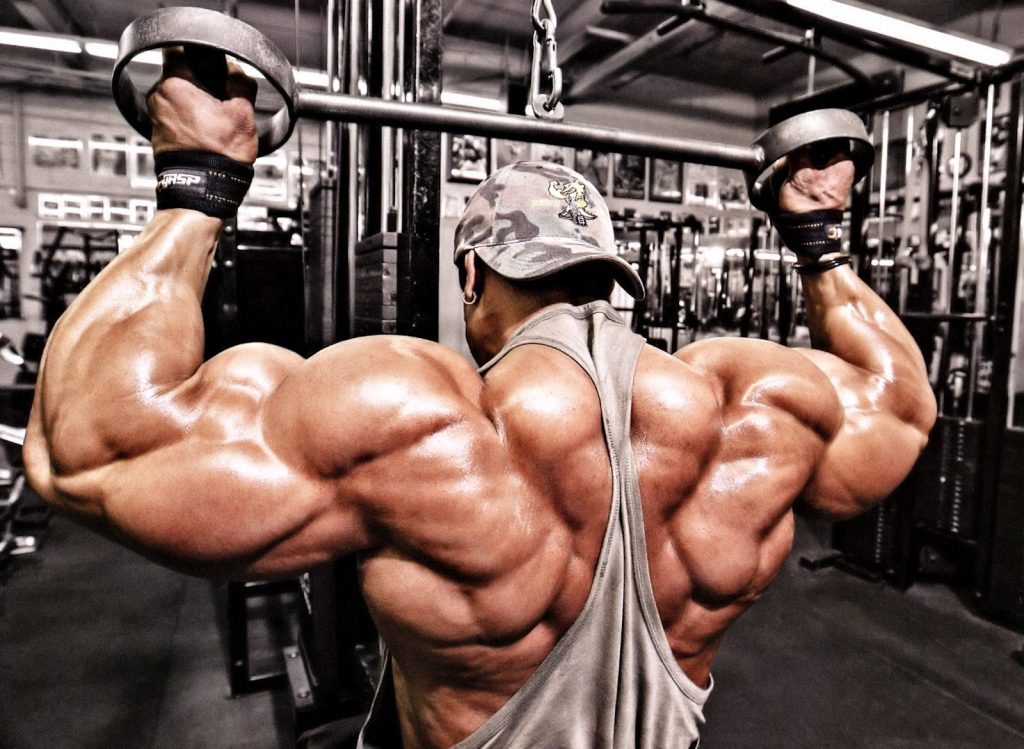What are Anabolic Steroids?
Anabolic Steroid is the common name for synthetic substances related to the main male sex hormones (androgens). The main purpose of Anabolic Steroids is to promote the growth of skeletal muscle and the development of male sexual characteristics (anabolic and androgenic effects). In addition, Steroids have some other effects. The term Anabolic Steroid will be used through-out this article due to its familiarity, although the proper term for these substances is anabolic-androgenic steroids or AAS.
History of Steroids
Anabolic Steroids were developed in the late 1930s primarily to treat hypogonadism, a condition in which the testes do not produce sufficient testosterone for normal growth or male development or functioning. The first medical usage of steroids was to treat some types of impotence, delayed puberty, and wasting of the body caused by HIV infection.
During the 1930s, doctors realized that anabolic steroids could enhance and promote the growth of skeletal muscle tissues in laboratory animals, which led to use of steroids first by weightlifters and bodybuilders, then by professional athletes in almost all sports. Steroid abuse has become so widespread in athletics that it affects the outcome of sports contests.
Steroids are synthetic derivatives of testosterone
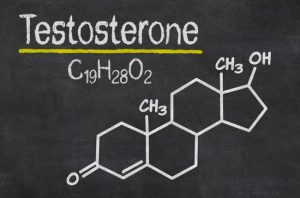
Steroids are defined as synthetic derivatives of main male hormone – testosterone. Testosterone is responsible for developing some of the male characteristics such as hair growth, lowering of the voice, and other. In addition, the male body produces much more testosterone than the female. Testosterone is produced mainly in the testis and a small amount is produced in the adrenal. It is synthesized from cholesterol. The regulation of its production may be simplified thus: the hypothalamus (part of the brain) produces Gonadotropin releasing hormone (GnRH) which acts on the anterior pituitary to raise the production of luteinizing hormone (LH) and follicle stimulating hormone (FSH). Luteinizing hormone acts on the Leydig cells in the testis, causing them to produce testosterone. Follicle stimulating hormone, together with testosterone act on the Sertoli cells in the testis to regulate the production and maturation of spermatozoa. Testosterone in turn acts on the hypothalamus and anterior pituitary to suppress the production of GnRH, FSH and luteinizing hormone, producing a negative-feedback mechanism which keeps everything well-regulated. The small amount produced in the adrenal (in both sexes) is regulated by secretion of adrenal corticotrophin hormone (ACTH), also secreted by the pituitary.
Testosterone, and its metabolites such as dihydrotestosterone, acts in many parts of the body, producing the secondary sexual characteristics often male: facial and body hair, balding, deep voice, thicker skin, greater muscle bulk and genital maturity. At puberty it produces acne, the growth spurt and the enlargement of the penis and testes as well as causing the fusion of the epiphyses (through its conversion to estrogens), bringing growth in height to an end. It takes some part in maintaining the sexual organs in the adult, but only a low concentration is required for this.
This information precedes any explanation of anabolic steroids. Synthetic means man made or artificial. This infers that doctors have created a complex substance from a simpler substance by chemical reactions or synthesis. Most anabolic steroids are made from Mexican Sarsaparilla root. This natural plant is chemically altered and synthesized to form the active anabolic ingredients. This is not to infer that the Mexican Sarsaparilla root is an Steroid substance on its own. It is virtually inert when ingested before this synthesis has been applied. It would be almost like assuming that since wine is made of grapes, one could be intoxicated by ingesting grapes. Testosterone is the primary sex hormone found in men. It is produced primarily by the testes and controls a great number of metabolic functions. It is an androgen which stimulates growth in tissues in which it acts, one of them being muscle. Testosterone has anabolic and androgenic effects. The anabolic effects are isolated to be the ones which affect muscle tissue directly. The androgenic effects are primarily responsible for secondary sexual characteristics in men: facial hair, deepening of the voice, sex organ development and erection, as well as aggression. The term anabolic instead of androgenic steroid implies that some effort has been made to alter the testosterone molecular structure so that the drug exerts more of an anabolic effect than an androgenic effect. If we want a simplified interpretation of the original definition “anabolic steroids are synthetic derivatives of testosterone.” we might do so by saying this: “anabolic steroids are man made copies of a male hormone. The hormone which makes boys become men, and which makes muscle tissue grow much faster.”
Direct and Indirect Anabolic Effects
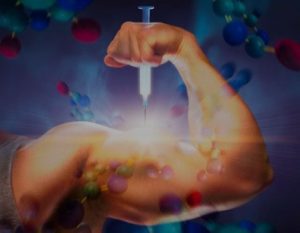 Although testosterone had been isolated, synthesized and actively experimented with for many decades now, there is still some debate today as to exactly how steroids effect muscle mass. At this point in time the primary mode of anabolic action with all anabolic/androgenic steroids is understood to be direct activation of the cellular androgen receptor and increases in protein synthesis. As follows, if we are able to increase our androgen level from an external source by supplementing testosterone or a similar anabolic steroid, we can greatly enhance the rate in which protein is retained by the muscles. This is clearly the primary cause for muscle growth with all anabolic/androgenic steroids. As our hormone levels increase, so does androgen receptor activation, and ultimately the rate of protein synthesis.
Although testosterone had been isolated, synthesized and actively experimented with for many decades now, there is still some debate today as to exactly how steroids effect muscle mass. At this point in time the primary mode of anabolic action with all anabolic/androgenic steroids is understood to be direct activation of the cellular androgen receptor and increases in protein synthesis. As follows, if we are able to increase our androgen level from an external source by supplementing testosterone or a similar anabolic steroid, we can greatly enhance the rate in which protein is retained by the muscles. This is clearly the primary cause for muscle growth with all anabolic/androgenic steroids. As our hormone levels increase, so does androgen receptor activation, and ultimately the rate of protein synthesis.
But other indirect mechanisms could possibly affect muscle growth outside of the normally understood androgen action on protein synthesis. An indirect mechanism is one that is not directly brought about by activation of the androgen receptor, but the affect androgens might have on other hormones, or even the release of locally a hormones or growth promoters inside cells (perhaps mediated by other membrane bound receptors). We must remember also that muscle mass disposition involves not only protein synthesis, but also other factors such as tissue nutrient transport and protein breakdown. We need to look at androgenic interaction with these factors as well to get a compete picture. Concerning the first possibility, we note that studies with testosterone suggest that this hormone does not increase tissue amino acid transport. This fact probably explains the profound synergy bodybuilders have noted in recent years with insulin, a hormone that strongly increases transport of nutrients into muscle cells. But regarding protein breakdown we do see a second important pathway in which androgens might affect muscle growth.
Anti-Glucocorticoid Effect of Testosterone
Testosterone (and synthetic anabolic/androgenic steroids) may help to increase mass and strength by having an anticatabolic effect on muscle cells. Considered one of the most important indirect mechanisms of androgen action, these hormones are shown to effect the actions of another type of steroid hormone in the body, glucocorticoids (cortisol is the primary representative of this group) Glucocorticoid hormones actually have the exact opposite effect on the muscle cell than androgens, namely sending an order to release stored protein. This process is referred to as catabolism, and represents a breaking down of muscle tissue. Muscle growth is achieved when the anabolic effects of testosterone are more pronounced overall than the degenerative effects of cortisol. With intense training and a proper diet, the body will typically store more protein than it removes, but this underlying battle is always constant.
When administering anabolic steroids however, a much higher androgen level can place glucocorticoids at a notable disadvantage. With their effect reduced, fewer cells will be given a message to release protein, and more will be accumulated in the long run. The primarily mechanism believed to bring this effect out is androgen displacement of glucocorticoids bound to the glucocorticoid receptor. In-vitro studies have in fact supported this notion by demonstrating that testosterone has a very high affinity for this receptor and further suggesting that some of its anabolic activity is directly mediated through this action It is also suggested that androgens may indirectly interfere with DNA binding to the glucocorticoid response element Although the exact underlying mechanism is still in debate, what is clear is that steroid administration inhibits protein breakdown, even in the fasted state, which seems clearly indicative of an anti-catabolic effect.
Testosterone and Creatine
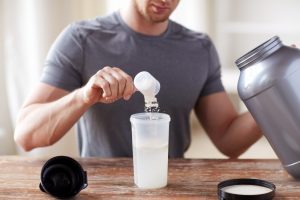 In addition to protein synthesis, a rise in androgen levels should also enhance the synthesis of creatine in skeletal muscle tissue, as creatine phosphate (CP), plays a crucial role in the manufacture of ATP (adenosine triphosphate), which is a main store of energy for the muscles. As the muscle cells are stimulated to contract, ATP molecules are broken down into ADP (adenosine diphosphate), which releases energy. The cells will then undergo a process using creatine phosphate to rapidly restore ADP to its original structure, in order to replenish ATP concentrations. During periods of intense activity however, this process will not be fast enough to compensate and ATP levels will become lowered. This will cause the muscles to become fatigued and less able to effort a strenuous contraction. With increased levels of CP available to the cells, ATP is replenished at an enhanced rate and the muscle is both stronger and more enduring. This effect will account for some portion of the early strength increases seen during steroid therapy. Although perhaps not itself technically considered an anabolic effect as tissue hypertrophy is not a direct result, androgen support of creatine synthesis is certainly still looked at as a positive and growth supporting result in the mind of the bodybuilder.
In addition to protein synthesis, a rise in androgen levels should also enhance the synthesis of creatine in skeletal muscle tissue, as creatine phosphate (CP), plays a crucial role in the manufacture of ATP (adenosine triphosphate), which is a main store of energy for the muscles. As the muscle cells are stimulated to contract, ATP molecules are broken down into ADP (adenosine diphosphate), which releases energy. The cells will then undergo a process using creatine phosphate to rapidly restore ADP to its original structure, in order to replenish ATP concentrations. During periods of intense activity however, this process will not be fast enough to compensate and ATP levels will become lowered. This will cause the muscles to become fatigued and less able to effort a strenuous contraction. With increased levels of CP available to the cells, ATP is replenished at an enhanced rate and the muscle is both stronger and more enduring. This effect will account for some portion of the early strength increases seen during steroid therapy. Although perhaps not itself technically considered an anabolic effect as tissue hypertrophy is not a direct result, androgen support of creatine synthesis is certainly still looked at as a positive and growth supporting result in the mind of the bodybuilder.
Testosterone and IGF-1
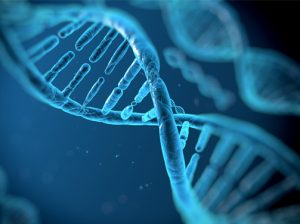 It has also been suggested that there is an indirect mechanism of testosterone action on muscle mass mediated by Insulin-Like Growth Factor. To be more specific, studies note a clear link between androgens and tissue release of 15, and responsiveness to, this anabolic hormone. For example, it has been demonstrated that increases in (GE-i receptor concentrations in skeletal muscle are noted when elderly men are given replacement doses of testosterone . In essence, the cells are becoming primed for the actions of IGF-i, by testosterone. Alternately we see marked decreases in (GE-i receptor protein levels with androgen deficiency in young men. It also appears that androgens are necessary for the local production and function of (GE-i in skeletal muscle cells, independent of circulating growth hormone and IGF-1 levels Since we do know for certain that (GE-i is at least a minor anabolic hormone in muscle tissue, it seems reasonable to conclude that this factor, at least at some level, is involved in the muscle growth noted with steroid therapy.
It has also been suggested that there is an indirect mechanism of testosterone action on muscle mass mediated by Insulin-Like Growth Factor. To be more specific, studies note a clear link between androgens and tissue release of 15, and responsiveness to, this anabolic hormone. For example, it has been demonstrated that increases in (GE-i receptor concentrations in skeletal muscle are noted when elderly men are given replacement doses of testosterone . In essence, the cells are becoming primed for the actions of IGF-i, by testosterone. Alternately we see marked decreases in (GE-i receptor protein levels with androgen deficiency in young men. It also appears that androgens are necessary for the local production and function of (GE-i in skeletal muscle cells, independent of circulating growth hormone and IGF-1 levels Since we do know for certain that (GE-i is at least a minor anabolic hormone in muscle tissue, it seems reasonable to conclude that this factor, at least at some level, is involved in the muscle growth noted with steroid therapy.
In looking over the proposed indirect effects of testosterone, and pondering the effectiveness of the synthetic anabolic/androgenic steroids in these regards, we must resist the temptation to believe we can categorize steroids as those which directly, and those which indirectly, promote muscle growth. The belief that there are two dichotomous groups or classes of steroids ignores that fact that all commercial steroids promote not only muscle growth but also androgenic effects. There is no complete separation of these traits at this time, making clear that all activate the cellular androgen receptor. I believe the theory behind direct and indirect steroid classifications originated when some noted the low receptor binding affinity of seemingly strong anabolic steroids like Oxymetholone and Methandrostenolone If they bind poorly, yet work well, something else must be at work. This type of thinking fails to recognize other factors in the potency of these compounds however, such as their long half-lives, estrogenic activity and weak interaction with restrictive binding proteins. While there may possibly be differences in the way various compounds could foster growth indirectly, such that advantages might even be found with certain synergistic drug combinations, the primarily mode of action with all of these compounds is the androgen receptor. The notion that steroid X and Y must never be stacked together because they both compete for the same receptor when stimulating growth, while X and Z should be combined because they work via different mechanisms, should likewise not be taken too seriously. Such classifications are based on speculation only, and upon reasonable investigation seem clearly invalid.
Anabolic Steroid Side Effects
The action of testosterone can be in ways both beneficial and detrimental to the body. On the plus side, this hormone has a direct impact on the growth of muscle tissues, the production of red blood cells and overall well being of the organism. But it may also negatively effect to growth of body, the production of skin oils, facial and scalp hair, and the level ”bad and good” cholesterol in the body. In fact, men have a shorter average life span than women, which is believed to be largely due to the cardiovascular defects that this hormone may help bring about. Testosterone in high dosages convert to estrogen, a hormone with its own unique set of effects. As we have already discussed, high levels of estrogens can lead to water retention, fat storage, high blood pressure, acne, gynecomastia and other. Clearly, most negative side effects from anabolic steroids are simply those actions and androgenic effects of testosterone that we are not looking for when taking anabolic steroids. In any case, raising the level of testosterone in the body will simply enhance both its bad and good features, you just have to be ready and comprehend how to eliminate all side effects of steroids. In addition there is possibility of liver damage, which is a worry isolated to the use of 7-alpha alkylated oral steroids (Dianabol, Winstrol, Oral Turinabol, Anavar). Unless the athlete is using steroids abusively for a very long duration, side effects rarely amount to little more than a nuisance.
One could actually make a case that periodic steroid use might even be a healthy practice. Obviously, a person’s physical shape can relate closely to one’s overall health and well being. Provided some common sense is paid to health checkups, drug choice, dosage and off-time, how can we say for certain that the user is worse off for doing so? This position is of course very difficult to publicly justify with steroid use being so deeply stigmatized. Since this can be a very lengthy discussion.

